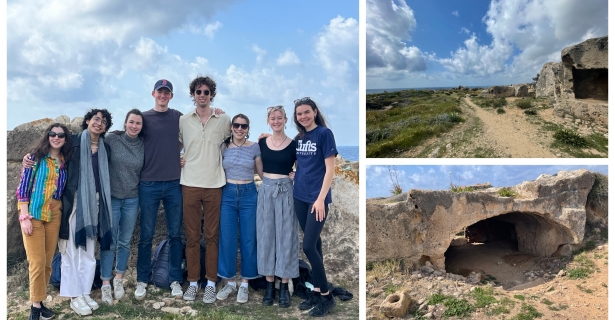This week I conducted interviews with many very interesting and knowledgeable experts on topics ranging from North Cyprus-Republic of Cyprus peace negotiations, asylum law in the Republic of Cyprus, Turkish foreign policy, and migration policy. It was an incredibly informative experience and has allowed me to further my analysis of the ways in which domestic politics in the Republic of Cyprus, as well as the north, and regional politics in the Eastern Mediterranean influence the creation and implementation of migration policy in the Republic of Cyprus. The “Cyprus problem”, that is, the issue of the north-south division, impacts every policy decision made in Cyprus and is the most salient issue in Cypriot politics. Everyone is very excited to dig further into their research when we get back to Boston with the insights we’ve gained from our interviews this week.
Since today was Saturday and all of us had finished our interviews for the week, we decided to take the two-hour bus ride to Paphos to see more of Cyprus and the many archaeological sites in and around the city. Our first stop was Tombs of the Kings, a UNESCO World Heritage Site and necropolis in the northeast of Paphos. The tombs are cut directly into the rock and were designed to resemble the houses of the living (hence the term “necropolis”, meaning “city of the dead”) in the Egyptian style of the time, about the 3rd century BCE. The tombs were used continuously from when they were built in Cyprus’s Ptolemaic period through the Hellenistic and Roman periods (3rd century BCE-4th century CE). The name of the site is a bit misleading, as the tombs did not actually hold kings but rather high administrative officials and other social elites of the periods in which they were used. I am currently taking Classical Archaeology, so being able to see an archaeological site of the cultures I’m studying in that class was an amazing learning experience.

